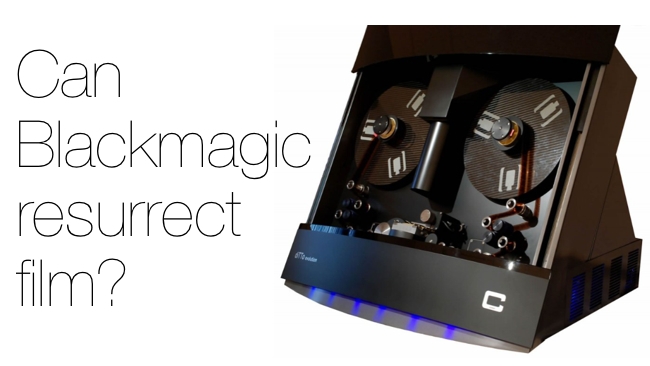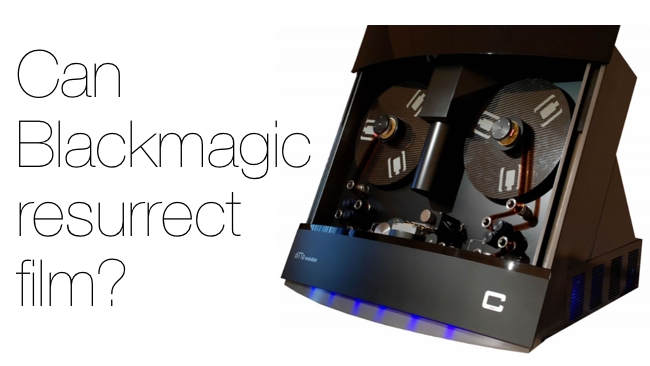
 Blackmagic Cintel Scanner
Blackmagic Cintel Scanner
You know what you never hear in the edit bay? “This looks too much like film, can we make this look less filmic?” John Burkhart reports
People love film, it’s what movies look like, but it’s definitely in danger. Film as editing media is utterly dead. Film as deliverable, is dying fast. Film as acquisition format, is still in intensive care.
Current digital cameras are now at about parity with film in terms of resolution and dynamic range. The next generation of digital cameras will probably exceed film in most technical areas. But aesthetics do trump technical specs, especially so in a wholly visual medium. So while digital will dominate (there’s no doubt about that), is there still room for film?
The major drawback of film is the expense. And the expenses of shooting film are well known: stock, processing, and scanning all add up. But what if you were to take the most expensive of these, the scanning, and radically shake up the cost structure?
Reworking technology
Enter Blackmagic Design. Blackmagic’s business is largely based on disruption. One of their models is taking post production technology that costs tens or even hundreds of thousands of dollars and marketed to high-end post houses, and reworking the technology at a fraction of the price to a much wider market of professionals and enthusiasts. Teranex, DaVinci, and Echolab (ATEM) were examples of previous big iron products that you’ll now find in many more lower budget studios.
While the Resolve Color Correction software has gone on to take the post world by storm; Blackmagic also happened to pick up Revival (the specialized film restoration software) in the DaVinci sale too. They haven’t really done much with it yet, but it is there… waiting…
Blackmagic Design bought Cintel
Then in July of 2012, Blackmagic Design bought Cintel, one of the major players in the film scanning market. Cintel’s diTTo scanners can handle 16mm and 35mm film, and output beautiful 10 bit log, 2k and 4k DPX files. The diTTo also can fit on a tabletop, rather than the walk-in freezer sized telecine units of yesterday. They also cost in the hundreds of thousands of dollars.
Now that two pieces of the film puzzle are already in place in Blackmagic’s offices, I went to talk to Richard Lim, Blackmagic Design’s Director of Asia, about their plans for Cintel, Revival, and film.
“We are still researching the CinTel technology and what we will plan to do with it. But we are definitely still excited by film, and are really looking forward to what we can do here.”
Richard stressed that Blackmagic doesn’t have any specific products they’re working on right now but he went on to add:
“We do have a very clear idea that it will be a Blackmagic Design way of doing things. We’ve always tried to benefit whatever specific segment we take on. Film will still stay a viable medium. Film is very important to this industry.”
Implosion of the film infrastructure has already happened
But is it too late already? The implosion of the film infrastructure has already happened, and it was faster and far more devastating than most people expected. Has the decline of film gone too far to turn around? Labs have drastically scaled back their processing capabilities. Fuji has left the motion picture market entirely, and Kodak is still going through bankruptcy proceedings. If Blackmagic does have a plan to revolutionize the cost structure of the film scanning market, they’d better move soon, while there still is one.
Tags: Business



Comments